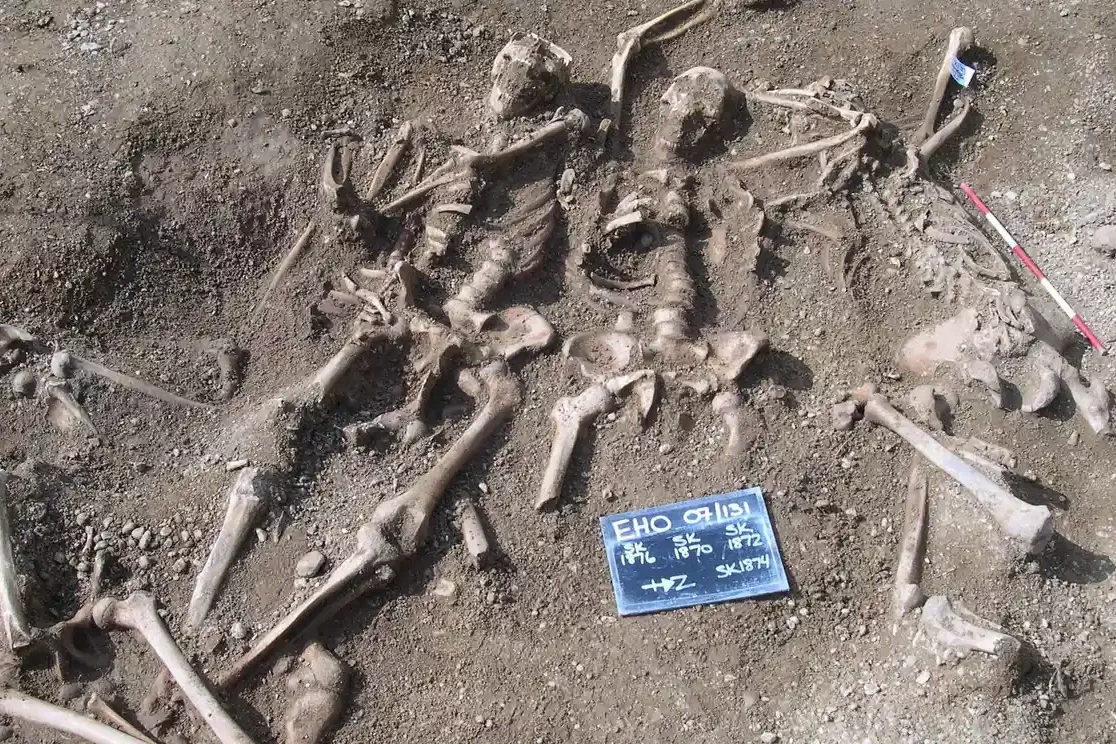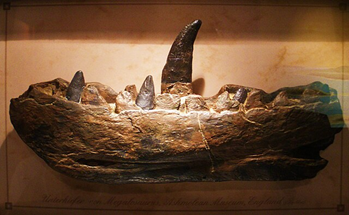Mass grave of murdered Vikings sheds light on King Aethelred’s doomed reign
A mass grave is unearthed
In January 2008, Thames Valley Archaeological Services began excavations near St John’s College, in preparation for the construction of a new accommodation building. They quickly discovered the remains of a 4000 year old neolithic henge, one of the largest ever found in Britain. Upon further investigation, broken pottery and food debris were found, indicating that the henge had been effectively used as a landfill site during the Middle Ages, thousands of years after it was constructed. However, it quickly became apparent that the site contained something far more significant, when human bones began to appear. It was a mass grave, bodies piled unceremoniously on top of each other. After a month of digging, the team concluded that they had unearthed the skeletal remains of 37 people.
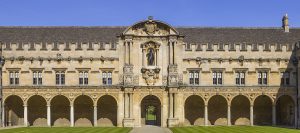
St John’s College, Oxford (copyright Andrew Shiva)
Radiocarbon dating showed that the bones dated from AD 960 to 1020, the late Anglo-Saxon period. But, although mass executions were not unheard of in this time period, the remains were not consistent with those found at previously discovered mass execution sites.
The skeletons were all of fighting age men, ranging from their late teens to mid-thirties, and were unusually tall for the period. Analysis of atomic variations within the bones revealed that the men’s diets consisted largely of fish and seafood, which was not typical of the Anglo-Saxons, strongly suggesting that these were the remains of Vikings. Given the evidence, it seemed probable that this mass grave might be archaeological evidence of the St Brice’s Day Massacre of 1002, in which the Anglo-Saxon king of England, Aethelred, ordered the extermination of all Danes living in England.
How were the victims killed?
It was concluded that the bodies had suffered extremely violent deaths. They had been brutally stabbed, with puncture marks in their vertebrae and ribs, and had suffered multiple blows from simultaneous attackers. One had been decapitated, with others showing evidence of attempted decapitation. Among the 37 victims, 27 had broken or fractured skulls, indicating traumatic head injuries. A detail that stood out as particularly significant to the archaeological team was the charring on some of the remains.
A letter from King Aethelred, detailing the rebuilding of St Frideswide’s Church (now Christ Church Cathedral) after it was damaged by the fire, appears to give some possible context to the charring of the remains:
“Striving to escape death, (the Danes) entered (a) sanctuary of Christ, having broken by force the doors and bolts, and resolved to make a refuge and defence for themselves therein against the people of the town and the suburbs; but when all the people in pursuit strove, forced by necessity, to drive them out, and could not, they set fire to the timbers and burnt (it) down.”
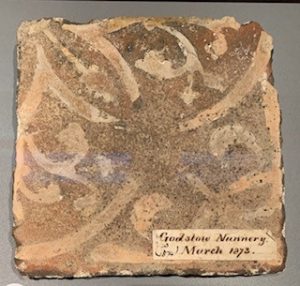
Medieval floor tile from St Frideswide’s Priory (now the site of Christ Church Cathedral), the Museum of Oxford.
A number of Danes had been trapped in a burning church, while seeking refuge from a violent mob instigated by the King’s edict. As King Aethelred recounted in a charter issued in 1004, “a decree was sent out by me, with the counsel of my leading men and magnates, to the effect that all the Danes who had sprung up in this island, sprouting like cockle (weeds) amongst the wheat, were to be destroyed by a most just extermination.” This day of violence would come to be known as The St Brice’s Day Massacre, and the bodies discovered in Oxford, Vikings who had been violently murdered and burned, seemed to be its victims.
Why did Aethelred hate the Danes? Raiders, mercenaries and conspiracy
Prior to the St Brice’s Day Massacre, the Norse had been living in relative peace with the Anglo-Saxons for a hundred years, with a huge part of Northern and Eastern England having existed as the Danelaw area, an area governed by Danish law and populated by Danes and other Norsemen. The Danes are generally thought to have been well integrated into English society. Old Norse and Old English were more or less mutually intelligible, with Anglo Norse dialects eventually emerging with features of the two languages. The Danes were also largely Christian, Denmark having officially adopted Christianity under the rule of Harald Bluetooth in the 960s. As a people, they were not dissimilar to the English, and tension was not especially high between the two communities. So why did the King order all Danes to be killed?
Although there was a significant population of Danish, and other Norse, settlers mostly living inside the Danelaw area, raiding parties from Scandinavia were still a problem. They still regularly sailed to England, where they caused destruction in their pursuit of riches. After Viking invaders defeated an English army at the Battle of Maldon in AD 991, Aethelred agreed to pay a huge sum to the Danes to end the fighting. Over the following years, Aethelred continued to pay off bands of Viking raiders, raising taxes to meet the increasing sums demanded. As well as affecting people’s finances, it is likely that the lavish payments were regarded as a national embarrassment, and part of the reason he ordered the killing of all Danes.
There are other factors that might have contributed to Aethelred’s dislike of the Danes. He regularly employed Viking chieftains, paying them handsomely to act as mercenaries, defending England against other raiders. However, in AD 997, some of his mercenaries turned against him and joined the raiding parties in their attacks on the southern counties. His lack of control over these Viking mercenaries may have made him fearful of conspiracy. According to the Anglo-Saxon Chronicle, Aethelred was told by his advisors that there was a plot to deprive him of his life and kingdom. It is not known whether this was true, or a calculated fabrication from his council designed to force him to take action to stop the huge payments to the Viking armies.
In 1002, the King was also enjoying a position of political strength, having married the sister of the Duke of Normandy, and thus securing an alliance with Normandy. Emboldened by his powerful new political ally, and perhaps feeling as though his position was a strong as it was ever going to be, he decided to act before another costly situation with the Danes could manifest. Seeking to eliminate the threat of raiding parties and the need for payments, and to protect himself from a possible Danish plot, Aethelred issued his decree, and called for the extermination of the Danes.
Who were the King’s true targets?
Given the sheer number of Danes and other Scandinavians settled in the England at the time, it seems incomprehensible that Aethelred actually intended for every person of Danish ancestry to be executed.
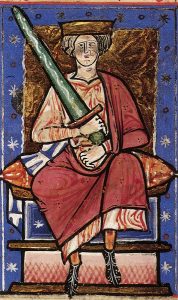
Aethelred or Ethelred II (‘the Unready’) in an early thirteenth-century copy of the Abingdon Chronicle
Aethelred is largely remembered as an inept and mediocre king, however his character has undergone some revision in recent years. Some historians believe that his edict was meant to target Danish mercenaries and Viking raiders, rather than average citizens.
The relative lack of archaeological evidence would seem to support this theory. Estimates by some historians put the Scandinavian population of England at around one million, approximately half of the total population. If it was intended that all Danes be killed, there would surely be irrefutable evidence in the form of numerous mass graves located all over the country. However, there have been no such grave sites discovered inside what was the Danelaw area where Danes were most numerous, indicating that average citizens were not widely targeted. Instead, the most compelling archaeological evidence of the victims of the King’s decree are in Oxford, an administrative centre that might have hosted Danish mercenaries or those with military connections.
A second grave site is discovered
Following the discovery in Oxford, a second mass grave was discovered in Dorset by another archaeological team. There were more bodies here than in the Oxford site – 54 in total, mostly young males and a few older men – skulls in one pile, headless skeletons in another. Once again, the carbon dating found that the remains dated between AD 970 and 1030, and the analysis of the teeth revealed that the victims had come from Scandinavia.
This grave was more organised than the one in Oxford and suggested very different methods were used to execute the victims. Instead of a frenzied attack, pursuing the victims and then disposing of the bodies in a separate location, these men appear to have been publicly executed, all decapitated. The men are thought to have been stripped naked before death and dispatched by a sword blow to the front of the neck, which was not a typical method of execution. The remains showed no defensive wounds, except for one individual whose hands were sliced in half, possibly from attempting to grab the sword as it was swung toward him. Furthermore, the executioner appears to have been particularly unskilled, as traumatic additional wounds appear to have been inflicted during numerous attempts to fully decapitate the men. Many of the skeletons had suffered multiple misplaced blows to the head, jaw, neck and collarbones, prior to successful decapitation. There were more bodies found than skulls, suggesting some heads were kept, perhaps as trophies.
The findings in Dorset appeared to indicate a second mass grave containing the victims of King Aethelred’s order. It would seem that the St Brice’s Day Massacre was not an isolated event.
The Danish Invasion
Another aspect of the St Brice’s Day Massacre is the involvement of the Danish royal family. The sister of the Danish King, Gunhilde, who is said to have been a hostage of Aethelred’s at the time the edict was issued, was allegedly killed as part of the massacre. However, her remains have never been found. Gunhilde’s husband, Pallig, was one of the Danes who served king Aethelred, until he ultimately betrayed the King and joined the raiders in their attacks on Anglo-Saxon settlements. It has been theorised that revenge for Pallig’s desertion was another contributing factor to Aethelred’s edict, or the source of his paranoia concerning a Danish plot to kill him.
The deaths of Gunhilde and her husband were a significant contributing factor to the Danish King’s decision to invade England in 1003, a series of events which finally concluded with his son Cnut’s conquest of England. The St Brice’s Day Massacre renewed the Danes’ determination to invade England, and in AD 1003, just one year after the massacre, King Sweyn of Denmark began his assault against Anglo-Saxon England. His campaign was sustained and violent, reminiscent of the first Viking invasion more than a hundred years before.
The Danish king, Sweyn Forkbeard, conquered England in 1013 and Aethelred fled to Normandy. Aethelred, his wife Emma, and their children, returned to London after Sweyn’s death in 1014. However, Aethelred died soon after, and Sweyn’s son Cnut became the King of England, taking Emma as his new wife. Cnut would come to be known as Cnut the Great, while Aethelred was known as Aethelred the Unready.
It seems as though Aethelred’s assertion that the Danes meant to kill him and to claim his kingdom was prescient. Although there seems to have been no immediate threat from the Scandinavian settlers living in England, some of whom lost their lives in the St Brice’s Day Massacre as a result of his edict, Aethelred’s actions did provoke a harsh response from Denmark, indirectly ending in the very scenario he had feared.
A victim returns home
As an interesting bookend to this story, one of the Viking skeletons discovered in Oxford, back in 2008, was recently found to be closely related to another male skeleton found in Otterup, Denmark, in 2005. It is thought that they could have been half- brothers or perhaps cousins. The Otterup skeleton is thought to have been a farmer who died in his mid-50s from a stab wound. The Oxford Viking has been loaned to the National Museum of Denmark in Copenhagen, so the two can be reunited for an exhibition on Viking life and history in Denmark, as well the reality of Viking raids. The exhibition ‘Join The Vikings – On Raid’ will run at the National Museum of Denmark until 2024.
Written and researched by MOX volunteer Elizabeth Kuligowski. Special thanks to Thames Valley Archaeological Services for use of the featured image.
Want to write your own Oxford-inspired post? Sign up as a volunteer blogger.
Sources
Savill, B, (2021) Remembering St Brictius: Conspiracy, Violence and Liturgical Time in the Danish Massacre of 1002, Published online by Cambridge University Press, https://www.cambridge.org/core/journals/journal-of-ecclesiastical-history/article/remembering-st-brictius-conspiracy-violence-and-liturgical-time-in-the-danish-massacre-of-1002/23DF703D15870BB0C5032C5F9A02FD8C#EN12
Savill, B, (2021) The St Brice’s Day Massacre: what really happened, https://www.historyextra.com/period/anglo-saxon/st-brices-day-massacre-what-happened-how-violent/
(2021) A Long-Awaited Family Reunion, https://www.sjc.ox.ac.uk/discover/news/long-awaited-family-reunion/
Keys, D. (2010) A Viking Mystery, Smithsonian Magazine Online, https://www.smithsonianmag.com/history/a-viking-mystery-59648019/
Williams, E. (2009) Decapitated Bodies – Were They Vikings, BBC News Online, http://news.bbc.co.uk/1/hi/england/dorset/8250295.stm
Featured photograph: Thames Valley Archaeological Services/PA.

